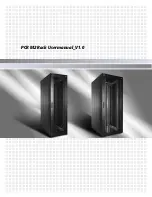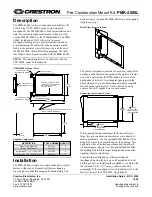
8
Carolina Cooker®
844-478-4334
Model M40322 & M49469
January 2021
3.7 LP (Propane) Gas and LP Cylinder
Safety
Failure to follow these safety instructions and warnings
could result in a fire or an explosion, which could cause
property damage, personal injury, or death.
Use Carolina Cooker® products (appliances) only
in accordance with Federal, state, and local laws
and/or ordinances. Whenever connecting, using,
storing, or transporting an LP cylinder, the tank
and its connections must be in compliance with the
following:
• National Fuel Gas Code, ANSI Z223.1/NFPA 54
• Storage & Handling of Liquefied Petroleum Gases,
ANSI/NFPA 58
• Natural Gas and Propane Installation Code, CSA B149.1
• Propane Storage and Handling, CSA B149.2
• Standard for Recreational Vehicles,
ANSI A119.2/NFPA 1192
• Recreational Vehicle Code, CSA Z240 RV Series
3.7.1 LP Cylinder Specifications
When purchasing or exchanging an LP cylinder for
this appliance, it must be constructed and marked in
accordance with the applicable standards of the US
and/or Canadian governing agencies.
The cylinder must also be equipped with:
• A shut-off valve terminating in a Type 1 LP cylinder
valve outlet.
• A Type 1 valve that prevents gas flow until a positive
seal is obtained.
• A collar to protect the cylinder shut-off valve.
• An overfilling prevention device (OPD).
• The cylinder supply system must be arranged for
vapor withdrawal.
Note:
For use with 20, 30, or 40 lb. cylinders of LP gas only.
3.7.2 Transporting and Refilling an LP Cylinder
1. Never transport an LP cylinder inside a car or in
the trunk of a car. Use an open vehicle, such as a
pickup truck.
2. Allow only qualified LP gas dealers to properly fill
or repair the LP cylinder. DO NOT OVER FILL.
WARNING
!
3. Check the dates on the cylinder collar, and if the
cylinder is past its re-qualification date, return it
for a new LP cylinder. Do not refill an out-of-date
LP cylinder.
3.7.3 Using an LP Cylinder
1. Never use the LP cylinder in a position other
than upright. Do not lay an LP cylinder on its side
during use.
2. Propane gas is heavier than air and will collect
in low areas. Proper ventilation is extremely
important.
3. When the appliance is not in use, the gas must
be turned OFF by closing the LP cylinder valve
and the gas pressure shutoff valve.
4. Before storing the appliance after use, always
disconnect the LP cylinder.
5. Never use an LP cylinder if it shows signs of
dents, gouges, bulges, fire damage, corrosion,
leakage, excessive rust, or other forms of visual
external damage. The cylinder may be hazardous
and should be checked by a qualified LP supplier.
3.7.4 Storing an LP Cylinder
1. LP cylinders must be stored outdoors, out of
reach of children, and must not be stored in
a human dwelling place, garage, or any other
enclosed area.
2. Never place a connected LP cylinder under the
appliance.
3. Do not store an LP cylinder within 10 feet (3m)
of any cooking appliance.
Summary of Contents for M40322
Page 27: ......











































